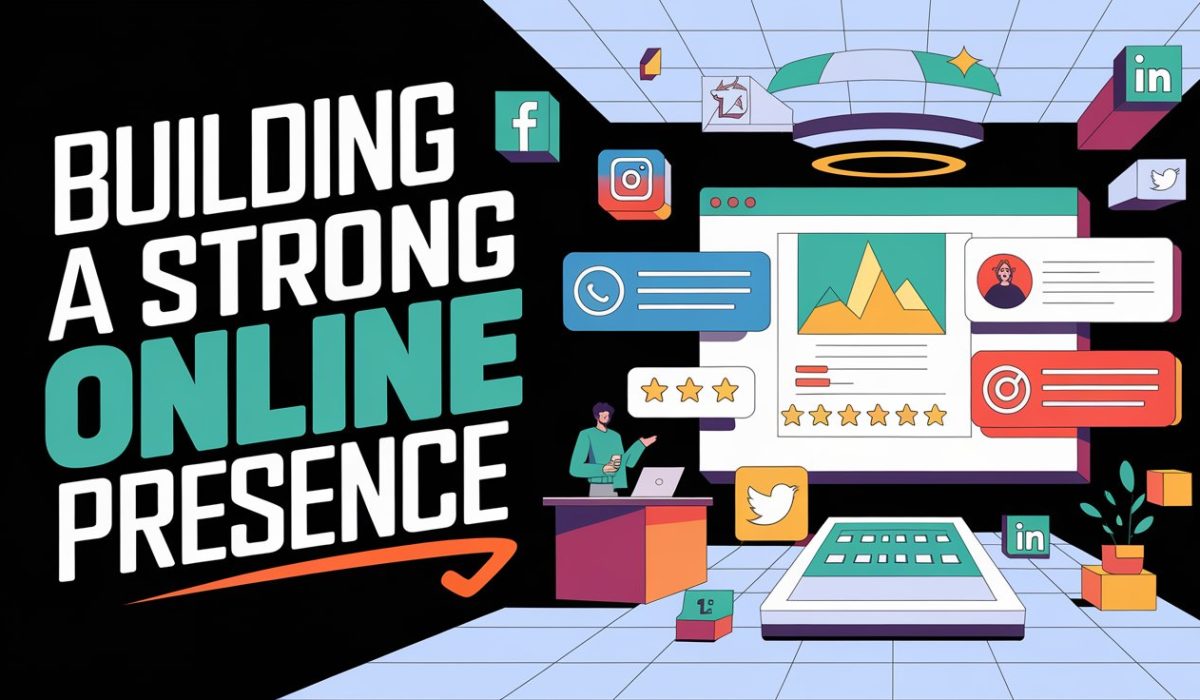Building a Strong Online Presence: Strategies for Success
In today’s digital age, having a robust online presence is essential for individuals and businesses alike. It not only enhances visibility but also builds credibility and fosters customer engagement. Whether you’re an entrepreneur, a freelancer, or simply looking to enhance your personal brand, here are effective strategies to build a strong online presence.
1. Define Your Brand Identity
Before you start building your online presence, clarify what your brand represents. Consider the following:
- Mission and Values: Define your purpose and core values that guide your actions and decisions.
- Target Audience: Identify who you want to reach, understand their preferences, and tailor your content accordingly.
- Unique Selling Proposition (USP): Determine what makes you or your business unique and how you can differentiate yourself from competitors.
2. Create a Professional Website
A well-designed website serves as the foundation of your online presence. Follow these tips:
- User-Friendly Design: Ensure your website is easy to navigate, visually appealing, and mobile-responsive.
- Compelling Content: Include high-quality, informative content that showcases your expertise and engages visitors.
- SEO Optimization: Implement search engine optimization (SEO) best practices to enhance your site’s visibility on search engines.
3. Leverage Social Media Platforms
Social media is a powerful tool for building connections and engaging with your audience. Consider these strategies:
- Choose the Right Platforms: Focus on social media platforms where your target audience is most active (e.g., Facebook, Instagram, LinkedIn, Twitter).
- Consistent Posting: Regularly share valuable content that aligns with your brand and encourages interaction.
- Engagement: Respond to comments, messages, and mentions to foster a sense of community and connection.
4. Create Valuable Content
Content marketing is key to establishing authority and driving traffic to your online presence. Explore these content types:
- Blogging: Write informative blog posts that address your audience’s pain points and interests.
- Videos and Webinars: Create engaging videos or host webinars to share knowledge and connect with your audience.
- Infographics and Visuals: Use eye-catching visuals to convey information quickly and effectively.
5. Utilize Email Marketing
Email marketing remains one of the most effective ways to connect with your audience. Follow these steps:
- Build an Email List: Encourage visitors to subscribe to your newsletter by offering valuable content or incentives.
- Regular Newsletters: Send out regular newsletters featuring updates, insights, and exclusive content to keep your audience engaged.
- Personalization: Personalize your emails based on subscriber preferences to enhance engagement.
6. Network and Collaborate
Building a strong online presence involves connecting with others in your industry. Consider these tactics:
- Join Online Communities: Participate in forums, groups, or social media communities related to your niche.
- Guest Blogging and Collaborations: Collaborate with other professionals by guest posting or co-hosting webinars to reach new audiences.
- Attend Virtual Events: Participate in online conferences or networking events to expand your connections.
7. Monitor and Adapt
Tracking your online performance is crucial for continuous improvement. Use these techniques:
- Analytics Tools: Utilize tools like Google Analytics to monitor website traffic, user behavior, and conversion rates.
- Social Media Insights: Regularly review engagement metrics on social media to understand what resonates with your audience.
- Feedback and Surveys: Gather feedback from your audience to identify areas for improvement and adapt your strategies accordingly.
Conclusion
Building a strong online presence requires a thoughtful approach and consistent effort. By defining your brand identity, creating a professional website, leveraging social media, and providing valuable content, you can establish authority and engage your audience effectively. Remember to monitor your progress and adapt your strategies as needed to ensure long-term success in the digital landscape.
